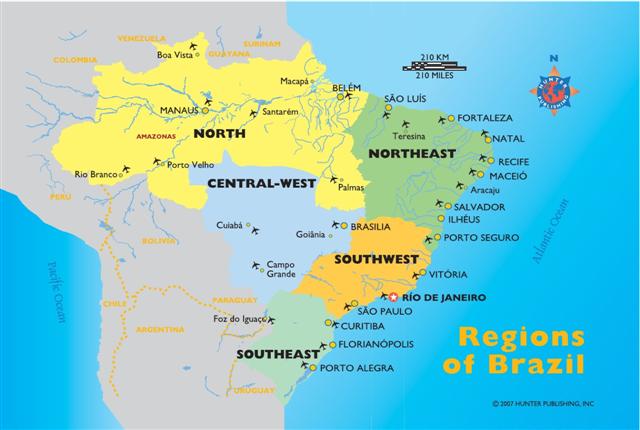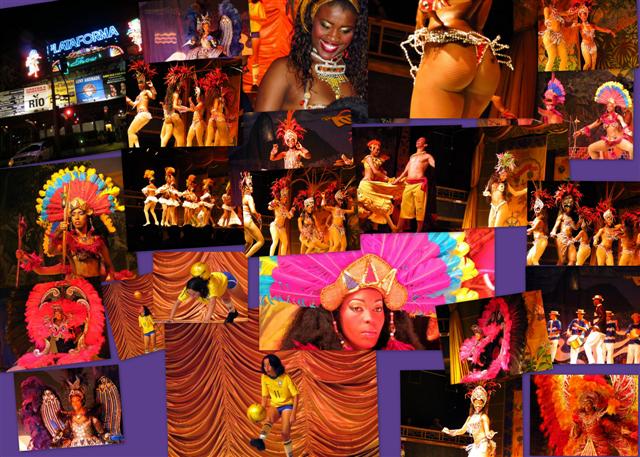Prolog
In February 2011 we sailed with Royal Caribbean’s.
I had an appointment with the “Future Cruises Director”: The topic was: Brazil.
I had an appointment with the “Future Cruises Director”: The topic was: Brazil.
I found out that in a year, a RCCL’s ship will cruise through some of Brazil’s ports and the trip will end in Rio de Janeiro in time for the Rio’s Carnival.
In the following months I worked with “Escaped to Latin America”, which we had used in the past (Peru, Ecuador) and together we came up with a wonderful itinerary: 17 days (including the cruise) in Brazil.
In June 2011 I received a letter from RCCL, which informed me that the cruise had been cancelled. It turned out that the Brazilian’s authorities had raised the fees for the ship to dock in Rio’s port during the Carnival and RCCL had rejected their new hike in fees and simply cancelled the cruise.
I was devastated, as I already booked the trip with the travel agency, paid them a deposit, which they had used to make deposits in all the hotels, etc., and I already had purchased airline tickets to and from Brazil.
After the initial shock I started to look for an optional cruise and luckily found one that leaves Brazil to Uruguay at almost the same dates. The major difference was that the new cruise would start it sailing in Sao Paulo (and not Rio) and return to San Paulo.
I contacted the travel agent and changed the whole itinerary to accommodate the new schedule and around August 2011 we were all set and started to count the days…
Day 1: February 3rd, 2012
A “Super Shuttle” van showed up at our residence to pick us up to LAX Airport. The van was 45 minutes late and to our dismay had stopped in a hotel to pick up some other passengers. When we arrived at the Holiday Inn in La Mirada, we found out that they were not ready and we will have to wait an additional 30 minutes for them. I calculated the time: If we were to wait for them, we will arrive one hour before our scheduled departure, which might not be enough for an international flight.
I called Super Shuttle’s headquarters and spoke to the dispatcher, who understood my dilemma and directed the driver not to wait for the passengers at the hotel but take us directly to the airport.
Fighting the traffic on the 405 freeway, our driver managed to get us there with enough time to catch the flight.
Day 2: February 4th, 2012
After twelve and a half hours we arrived at Rio de Janeiro/Galeao–Antonio Jobim International Airport popularly known by its original name Galeao International Airport.
After going through custom and immigration we picked our luggage and found our awaiting guide for the next couple of weeks: Rodrigo.
On our way to the hotel we found out that Rodrigo had spent two years in Israel (in my hometown Eilat of all places) and could carry a conversation in Hebrew as well as English and Portuguese.
The hotel is located in front of the most famous beach in Rio de Janeiro: Copacabana beach and situated right in the center of the most famous beach in the world, and next to the famous Copacabana Palace. Our room, on the fourth floor, faced the beach and was very comfortable. The views from our window were magnificent.
We took a much needed shower and dressed like the locals: Shorts and T-Shirts as we walked down to the beach.
The weather was perfect and we breathed in the fresh air. We found hundreds of people, most of them tourists like us, walking up and down the wide sidewalks, sun bathing on the white sands and swim around. The views around were breathtaking and it started to settle in our minds: we are here, in the famous beach, the one we used to see in the movies, read about it and hear about it from so many travelers.
The weather was perfect and we breathed in the fresh air. We found hundreds of people, most of them tourists like us, walking up and down the wide sidewalks, sun bathing on the white sands and swim around. The views around were breathtaking and it started to settle in our minds: we are here, in the famous beach, the one we used to see in the movies, read about it and hear about it from so many travelers.
=================================================================================================================================================================================
We walked on the promenade, which is a pavement landscape in large scale (3 miles long). It was completed in 1970 and has used a black and white Portuguese pavement design since its origin in the 1930s: a geometric wave. We found a cute restaurant along the way and had a light lunch (which was very expensive!) and then returned to our room for a long nap.
We woke up at 6:00 pm and as we walked out of the hotel we found Rodrigo, already waiting to take us for our night activities.
=================================================================================================================================================================================
Our last stop was at the Plataforma Theater where we enjoyed the most famous spectacle of the authentic Brazilian folklore! For over two hours we watched dazzling dancers, who performed the famous Samba in all kind of styles. It was a loud nightbut the costumes (or lack of them) and the razzle-dazzle of colors combined with the samba beat made us dance in our seats; the pounding drums, the variety of fast–moving actions including carnival scenes, acrobatic dances, and voodoo ceremonies were thoroughly entertaining. It was a spectacular samba extravaganza show!
=================================================================================================================================================================================
We were back in the hotel at around 12:15 am and the fatigue accumulated in the last two days, overcame our excitement as we fell asleep as soon as we lay down in our comfortable beds.
=================================================================================================================================================================================
Day 3: February 5th, 2012
We woke up at 6:30 and after breakfast went out for a stroll along Copacabana Beach. Though it was quite early, we watched hundreds of people starting their
day, exercising, reading, meditating, or just sitting on the white sand.
Christ the Redeemer. It is considered to be the largest Art Deco statue in the world and the 5th largest statue of Jesus in the world. It is 39.6 meters (130 ft) tall!
=================================================================================================================================================================================
=================================================================================================================================================================================
It was sculpted by French sculptor Paul Landowski. A group of engineers and technicians studied Landowski submissions and the decision was made to build the structure out of reinforced concrete instead of steel, more suitable for the cross-shaped statue. The outer layers are soapstone, chosen for its enduring qualities and ease of use. Construction took nine years, from 1922 to 1931.
The view was just breathtaking! We were able to see the entire city of Rio de Janeiro and as it turned out, we actually got a preview of what we were about to visit in Rio, for the next few days.I had both of my cameras with me and took many pictures of the amazing statue and the breathtaking views. We spent a couple of hours looking around and the frequent word that came out of our mouth was just “WOW”.
=================================================================================================================================================================================
=================================================================================================================================================================================
No sooner than one section of the steps is 'finished', Selarón starts work on another section, constantly changing it so that it is an ever evolving piece of art.
Selarón considers the work as "never complete" and claims that "This crazy and unique dream will only end on the day of my death".
Selarón considers the work as "never complete" and claims that "This crazy and unique dream will only end on the day of my death".
Originally, tiles for the work were scavenged from various construction sites and piles of urban waste found on the Rio streets. Today however, most of the tiles are donated by visitors from all around the world. Of the 2000+ tiles, 300-odd are hand painted by Selarón depicting a pregnant African woman. Selarón doesn't comment on this except to say that it is a "Personal problem from my past".
The stairway has 215 steps, starts behind Sala Cecília Meirelles, a Lapa cultural venue and ends at the Santa Teresa Convent, the district's birthplace.
=================================================================================================================================================================================
=================================================================================================================================================================================
=================================================================================================================================================================================
=================================================================================================================================================================================
Day 4: February 6th, 2012
=================================================================================================================================================================================
We return with the tram back to the streets. Though the time was only around 10:30, the heat of the day was overwhelming. The temps were in the 90's and the humidity factor was around 65%. We stopped for a few minutes to enjoy a guava popsicle, while waiting for Rodrigo who had parked his van a few blocks away.
We drove through the city's street as the traffic was horrible and as it turned out, a traffic fatal accident had occurred inside a tunnel, where a bus ran over a motorcycle, leaving no chance for the biker. We saw his body on a stretcher alongside the bus.
=================================================================================================================================================================================
After a short drive from Bara, we arrived to Sao Conrado Beach, a truly beautiful, relaxing and sunny spot in Rio de Janeiro. Among the main attractions of Sao Conrado beach are the strong water swells that provide a nice view though swimming might be hard to practice here.
The waves are hollow, fast and powerful, the beach-break type, heading right and left on a rather short distance.
Besides surfers, another category of tourists that show interest in Sao Conrado are the hang gliders.
=================================================================================================================================================================================
The view of the city and the bay were unforgettable.
We walked around taking pictures and enjoying the beautiful scenery. We stopped at a local bakery and had a delicious cappuccino along with delicious empanadas and some pastries.
Our next stop was Leblon, an affluent neighborhood and a beach in Rio de Janeiro. It is one of Rio’s most desirable districts, which is
becoming increasingly upper class as rents continue to rise. The beach is packed with exclusive hotels, restaurants, bars and boutiques.



A short drive later we arrived to Ipanema Beach and walked around for an hour, breathing the fresh air and enjoying our beautiful surroundings.
=================================================================================================================================================================================
Urca Beach was our next stop. It is a traditional and wealthy residential neighborhood. It was easy to see the successive phases of Urca's development strolling around the neighborhood. Most of the residential houses date from the late 1920s to the late 1940s and are a portfolio of house styles popular at the time. Urca Beach is frequently visited by the locals, where prices are much lower than neighboring Copacabana. The beach is the perfect place for sun tanning and an occasional dip in its warm waters. Food, drinks, and accommodation are much cheaper. Although the area is more a bay than a beach, we found a number of locals indulging in their favorite beach sports with the splendid Sugarloaf in the background.
We walked for a couple of miles and arrived to a typical Brazilian
Steakhouse, Cruzeiro Do Sul: A buffet style meal with a twist: the cook visited the tables frequently with BBQ meat (or chicken) and would slice pieces
off a variety of skewers and into our plates.
The meat was delicious and we consumed huge portions. We were also served caipirinha, an alcoholic beverage made of lime, cachaça (a liquor made from fermented sugarcane juice), sugar and ice cubes.
The meat was delicious and we consumed huge portions. We were also served caipirinha, an alcoholic beverage made of lime, cachaça (a liquor made from fermented sugarcane juice), sugar and ice cubes.
This lush short stretch of tropical forest is almost completely tree covered. Along the way we encountered families of small monkeys (Mico) living in the trees that line and cover the trail. Most of the monkeys dart about in the canopy overhead, but some relaxed in the trees surprisingly close to eye level.
=================================================================================================================================================================================
We walked
the trail (for about a mile) and found out that if we would walk the entire length of it we could actually reach to the top of the first of Sugarloaf Mountain's two humps. On the
trails we saw many families, tourists and also soldiers, who were running the
trails. We learned that they were from a nearby military school.
After about 30 minutes we walked back and entered the tram station. We watched three rock climbers on the steep of Babilônia hill. Later we entered the cable car, (in popular Portuguese, bondinho - more properly called teleférico).
The 400-meter route between the peaks of Pão de Açúcar and Morro da Urca, took about 15 minutes and we arrived to a lower hill, Morro da Urca (220 meters high), and enjoyed the great views of the downtown area and the bay, then a second tram took us up to twice the height and to the top of Pão de Açúcar , or the Sugarloaf, one of several monolithic morros (hills) of granite and quartz that rise straight from the water's edge around Rio de Janeiro.
The time was around 8:00 pm when we made it there. The views were unbelievable. While watching the surrounding I remembered all those pictures, postcards and movie scenes that featured the Sugarloaf. I just could not fathom the fact that I was actually there. We waited patiently for the sunset in the west where Christ the Redeemer was located. As the sun set over the hill, a magnificent view displayed in front of us. The sunrays made the statue glow and a path of the rays made its way between the buildings. There were many people at the site, mostly local families.
We spent an hour absorbing the beauty of Rio from the top of this magnificent site and return with the cable car back to the grounds and after a short drive We were back in the hotel checking our emails and then called it a day.
Day 5: February 7th, 2012
Once again we woke up early and after breakfast were picked up by Rodrigo.
We headed east and then south towards the city of Angra dos Reis, about 160 km from Rio.
We headed east and then south towards the city of Angra dos Reis, about 160 km from Rio.
The road to Angra is simply beautiful, with breathtaking views of the sea on one side and the forests on the other. We made many stops for pictures taking and visited towns such as Muriqui, Mangaritaiba, and Itachuruva.
=================================================================================================================================================================================
=================================================================================================================================================================================
We arrived at the bay where we embarked a boat.
=================================================================================================================================================================================
We toured around for about six hours, making stops in 3 different islands where we used our snorkels to dive around and swim in the warm water. The price for the trip included lunch, but in order to “upgrade” for a better dish, we had to pay extra. We ordered a wonderful dish, which was made with deep-fried sea-food and potatoes. It was surprisingly amazing.


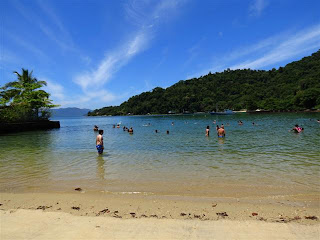



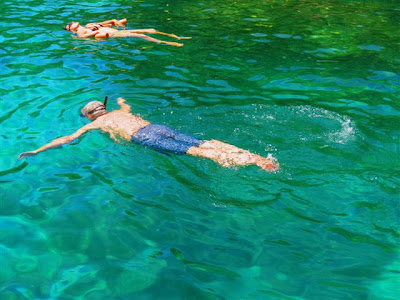

On the boat we met the director of this mini cruise, he happened to be an Israeli named Eli Solomon and he came to us often, translating the announcements and to tell us what to expect next. It was very helpful as none of the crew members spoke any English (or any other language, besides Portuguese).
We were back to our hotel at around 8:30 pm, skipped dinner and climbed our bed at around 9:30!
Day 6: February 8th, 2012
=================================================================================================================================================================================
The 65 km drive was pleasant and as we climbed few mountains, the
beautiful green valley of the Quitandinha and Piabanharivers was displayed underneath our road.
=================================================================================================================================================================================
=================================================================================================================================================================================
The Hotel guests comprised millionaires, movie stars, politicians, etc., all seeking the best life had to offer. In 1946, President Dutra outlawed gambling in Brazil, plunging the glamorous Palace into utter economic ruin. Unable to survive solely as a hotel, its apartments were gradually sold out. As of 1989 it was restored and its common areas are currently rented out for conferences, events, shows and trade fairs. A beautiful lake lies in front of the building, with a lighthouse.
=================================================================================================================================================================================
=================================================================================================================================================================================
After the Republic was proclaimed in 1889, the Palace was rented out to two different schools.  We entered the building and were asked to put some kind of slippers over our shoes so we
would not ruin the original flooring.
We entered the building and were asked to put some kind of slippers over our shoes so we
would not ruin the original flooring.
We toured the Empress’s living room, dining-room, music chamber, D. Pedro II’s quarters and jewel chamber rooms and were impressed by the simplicity of their contents and by the condition of all furniture and other items. The main attraction here is no doubt D. Pedro II’s crown, exhibited under stringent security precautions. It is made from solid gold, ornamentally engraved and studded with diamonds and pearls. Also on display is D. Pedro I’s crown and his gold rod. The museum is equipped with a huge number of objects and pieces as well as rare works instrumental, which help the visitors to better understand the Brazilian’s history.
=================================================================================================================================================================================
We toured the Empress’s living room, dining-room, music chamber, D. Pedro II’s quarters and jewel chamber rooms and were impressed by the simplicity of their contents and by the condition of all furniture and other items. The main attraction here is no doubt D. Pedro II’s crown, exhibited under stringent security precautions. It is made from solid gold, ornamentally engraved and studded with diamonds and pearls. Also on display is D. Pedro I’s crown and his gold rod. The museum is equipped with a huge number of objects and pieces as well as rare works instrumental, which help the visitors to better understand the Brazilian’s history.
During the
entire visit we were accompanied with guards that ensured we won’t touch anything and of course will not take any pictures.
=================================================================================================================================================================================
=================================================================================================================================================================================
Once we went inside the church we saw graves where inside them were the remains of D. Pedro II, his wife Teresa Cristina, Princess Isabel and her husband, the Count D'Eu.
We crossed the river and went along a beautiful avenue where on both sides are many famous
historical homes.  We entered a beautiful
hotel named Roteiros De Charme, a manor-house dated from 1875 in the imperial city, which was restored and provides its guests and visitors with refinement, comfort, and culture, plus first-class gastronomy. What a beauty!
We entered a beautiful
hotel named Roteiros De Charme, a manor-house dated from 1875 in the imperial city, which was restored and provides its guests and visitors with refinement, comfort, and culture, plus first-class gastronomy. What a beauty!
=================================================================================================================================================================================
We passed some historical buildings such as Ipiranga House, Yellow Palace (Palacio Amarela),
Casa da Princesa Isabel, and Casa do Colono Alemao.
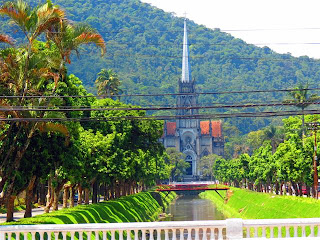

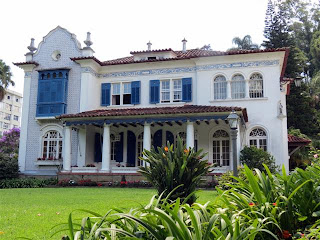
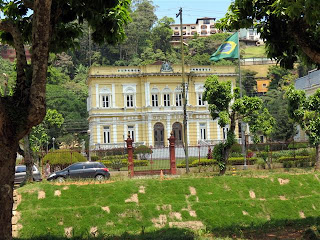




We continued our walk and noticed in one of the main streets a statue, which we learned was devoted to Alberto Santos-Dumont, a Brazilian aviation pioneer.
We walked back to the center of the city and found our way to Teresa Street. The street is famous for its large trade in clothing represented by the many clothing stores and attracts buyers (wholesalers and
retailers) from all over the world.
=================================================================================================================================================================================
We arrived to the city at about 7:00 pm. Tova entered a hair salon and when she was done, we made our way to a local restaurant not far from Copacabana Beach where we ordered a delicious Deep-fried seafood platter accompanied with potatoes and beer. By the time we were done with dinner the time was around 11:00.
=================================================================================================================================================================================
We stopped at a supermarket (yes, they are opened late in this town!) and purchased bread, meats and cheese.
We returned to the hotel and after preparing some sandwiched for
tomorrow, we called it a day (and what a day it was!!!)
Day 7: February 9th, 2012
Our second leg of our trip started early.
=================================================================================================================================================================================
The 300 miles (480 km) took us all day and we arrived to Sao Paulo at around 7:30 pm. Rodrigo found our hotel: Tivoli, located in the Jardins District and in my opinion was one of the best hotels we have ever stayed in.  It is a contemporary and sophisticated hotel, and its outstanding location, near
It is a contemporary and sophisticated hotel, and its outstanding location, near  Avenida Paulista, makes it more
attractive as it is right at the heart of the vibrant business and financial
area of the city. Inside the (very)
spacious lobby there is a variety of restaurants, bars and entertainment. The hotel has a combining innovation, style
and elegance in a welcoming environment.
Avenida Paulista, makes it more
attractive as it is right at the heart of the vibrant business and financial
area of the city. Inside the (very)
spacious lobby there is a variety of restaurants, bars and entertainment. The hotel has a combining innovation, style
and elegance in a welcoming environment.
=================================================================================================================================================================================
Back in our room, we checked our emails and then slept on the (very) comfortable bed.
=================================================================================================================================================================================
Day 8: February
10th, 2012
We woke up at around 7:30 and after the most delicious breakfast we toured the hotel and then met with our new guide Monika, who
=================================================================================================================================================================================
After visiting a nice park in the Jardins District, we headed to the Financial District. It is the home to the Sao Paulo
Stock Exchange, the Future Markets, and the Cereal Market Stock Exchanges (the second largest stock exchange in the World, in market value). We looked over to the tall buildings and found out that the city has been home to several of the skyscrapers buildings in Brazil, We noticed that the pace here is more like Wall Street’s than Copacabana’s.
We walked to yet another park-in-the-city: Ibirapuera Park, which is a major urban park. It has a large area for leisure,
jogging and walking with many fabulous trees, flowers and statues.
Cathedral. The Cathedral is the largest church in the city: 111 meters long, 46 meters wide, with the two flanking towers reaching a height of 92 meters its construction, in Neo-Gothic style, began in 1913 and ended four decades later. The history of the Cathedral goes back in time to the late 16th century, when it was decided that a main church would be built in the small village of Sao Paulo. This church, located on the site of the present cathedral, was only finished around 1616. Sao Paulo became seat of a district in 1745, and the old church was demolished and substituted by a new one, built in Baroque style, which was finished around 1764. This modest church would be the Cathedral of Sao Paulo until 1911, when it was demolished.
While
Monika was watching her car, as she could not find any parking spaces in this busy district, we toured the place on our own and met her 30 minutes later.
=================================================================================================================================================================================
We drove back to the city’s center where we stopped at Casa Das Rosas: (House of roses).
This is one of the last mansions
from the early 20th century, which is still standing and is now a poetry and arts center. A beautiful rose garden is just outside of the building.
=================================================================================================================================================================================
We drove through the streets of this big city and arrived at the Japanese Center (Liberdate). Monika told us that the first Japanese immigrants arrived in Brazil in 1908 and that Brazil is home to the largest Japanese population outside of Japan. As of 2000, there were between 1.4 and 1.5 million people of
Japanese descent in Brazil, where the largest concentration is in this city.
We then headed to Bom Retiro, a central district in the city. In the late 19th century and in the early 20th century and considered a modern region. In the 1960’s, factories began being replaced by clothing and fashion retail stores. The neighborhood had a mix of Mediterranean immigrants such as Italians, European Jews and Arabs from from Lebanon and Syria.
=================================================================================================================================================================================
The next attraction was Estadio Municipal – Paulo Machado De Carvalho, a huge soccer field, located in Praça Charles Miller, in the Pacaembu neighborhood. The stadium once held 60,000 seats, but now its maximum capacity is about 38,000 seats. As Monika and Tova waited outside, I entered the huge stadium and without asking anyone, climbed to the top rows to have a spectacular view of the stadium. A guard came moments later and escorted me outside.
Next to the stadium we saw a Farmer Market and since we were a bit hungry we stood in line to purchase few delicious empanadas and coconut juices. We loved it!
It is a good spot for breakfast. One could pick up a chicken croquette at the snack bar or, better yet, graze the buffet breakfast in the mezzanine and help himself to fresh-squeezed orange juice, strong espresso with steamed milk, pastries, cheeses and cold cuts. Those last two may seem a bit like American lunch, but this is a traditional Brazilian breakfast.
=================================================================================================================================================================================
While driving through the street of the city, Monika told us about Oscar Niemeyer, the famous Brazilian architect, born in 1907 and is still active at the age of 105 (!). He specializes in international modern architecture. He is a pioneer in exploring the formal possibilities of reinforced concrete solely for their aesthetic impact. During a career that spanned over seventy-five years, architect Oscar Niemeyer defined modern architecture in Brazil. Some of his creations are: National Stadium, Rio de Janeiro, Church of St Francis, Pampulha, Brazilian National Congress, Cathedral of Brasília, Brasília, and Samba Stadium, Rio de Janeiro (1983).
We stopped to take pictures of the Banespa Building, also named The
Empire State Building of Brazil, for its similarity to the famous New York building.
It was time to leave this magnificent city, but we will return to the city in a week to experience an unforgettable adventure.
We passed three huge tunnels and magnificent views. The trip took an hour and a half and we
arrived to the city, which is the biggest seaport in Latin America. We headed straight to the
port and to our cruise ship Vision of the Seas. Monika, who is probably one of the best tour guides we have used, was so helpful in the port and helped
us to make the boarding to ship easy and without any hiccups.
=================================================================================================================================================================================
At our table, we met Sergio, a Brazilian who came by himself.
Sergio spoke a little bit of English and seemed like a very nice guy. We met our head waiter, Christopher and his assistant Thaigo. Dinner was, as expected,
delicious and the service was perfect.
=================================================================================================================================================================================
We spent the next couple of hours in the dining room and headed to the theater. Portuguese was spoken everywhere. We found out that English speaking language on the ship was rare. When RCCL has a cruise in Brazil they hire Portuguese speaking crew, especially members of the entertainment group.
Someone told us that there are less than 100 passengers who speak English and the rest of them (2,900!) are Portuguese.
The introduction by the cruise director, Leo Peppe, was also given in the native language and then it was time for dancing Brazilian’s style, which means S-A-M-B-A, followed by an acrobatic act, performed by a man & a woman and a Tango dancing couple from Argentina. When a magician came to the stage and explained what
he was about to do in Portuguese, we decided that it would be better off to
leave the show and find some other night activities.
We ended up using the Internet not before
complaining to Leo that we did not appreciate feeling like strangers when it comes to the entertainment. He promised
that from now on he will translate all of his speech but warned us that jokes are some time hard to translate…
We went to sleep at midnight.
Day 9: February 11th, 2012
We woke up at 6:45 and as I stepped outside and into our balcony, I watched as the ship approached the beautiful city of Rio de Janeiro.
=================================================================================================================================================================================
=================================================================================================================================================================================
=================================================================================================================================================================================
of children lying down on the street. He told us that usually tourists do not get to hear the story but he wanted us to hear it from him:
The church has been a makeshift home at night to
possibly hundreds of homeless children, many of whom are involved with illegal drug trade and prostitution. The church's personnel provide food,
shelter, education and religious advice to as many of these children as possible. Because many of the homeless also live around the Church during the day, police keep a constant vigil on the church's surroundings.
On the night of July 23rd, 1993, eight young people were killed by a group of men, several of which were members of the police. The men were tried for the killings, but only two of them were convicted. The event was named The Candelaria Massacre. According to survivors, the morning of the day before the massacre, a group of children threw stones at police cars. Some of policemen allegedly told them, "don't worry, we will get you soon!" As children from the church were usually given warnings such as these by policemen, the young perpetrators left without worrying too much about the threat.
On the night of July 23rd, 1993, eight young people were killed by a group of men, several of which were members of the police. The men were tried for the killings, but only two of them were convicted. The event was named The Candelaria Massacre. According to survivors, the morning of the day before the massacre, a group of children threw stones at police cars. Some of policemen allegedly told them, "don't worry, we will get you soon!" As children from the church were usually given warnings such as these by policemen, the young perpetrators left without worrying too much about the threat.
At midnight, a few cars came to a halt in front of the church. Next, shots were heard. The children tried to take cover, but eight of them were shot to death, with several others wounded.
=================================================================================================================================================================================
Images of the stadium came back to me as we approached the site and there was no ending to my excitement.
=================================================================================================================================================================================
The stadium was opened in 1950 to host the FIFA World Cup. Since then, it has mainly been used for soccer matches between the major futball clubs in Rio de Janeiro, including Botafogo, Flamingo, Fluminense,
and Vasco da Gamma.

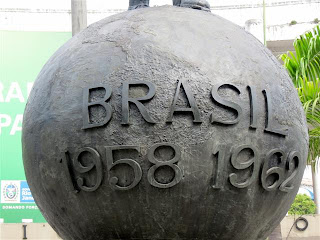
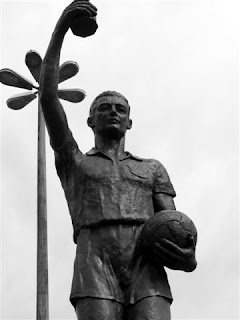

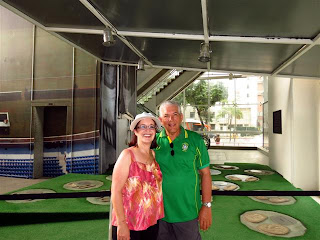


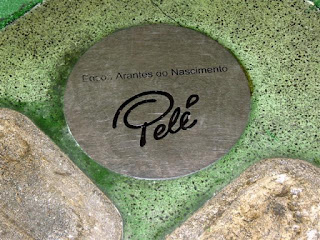




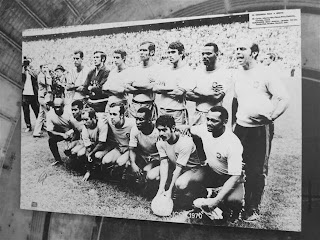



A guide accompanied us inside the museum and we walked through history, watching a short video and going through the many historical pictures from this soccer’s shrine, including the foot marks (ala Chinese Theater in Hollywood, CA) of the many famous players around the globe.The place is under heavy constructions in preparation for 2014’s World Cup Event. We spent the next hour looking at the many pictures and some statues, which took us for a walk in Soccer’s modern history.
We returned to our car and drove to Cinelândia Square (Praça Marechal Floriano) in the city center of Rio de Janeiro. Light rain was pouring down when we stopped in front of Teatro Municipal. Built in the beginning of the 20th
century and it came to represent the new republican regime and a new era to the
elegant capital of Brazil. It is one of the most beautiful and important theatres in the country.
Brazil became an important Portuguese colony and stop-over in the long journey to Goa. This Portuguese connection led to the exchange of several agricultural crops between India and Brazil in the colonial days. Indian cattle were also imported to Brazil. Most of the cattle in Brazil are of Indian origin.
=================================================================================================================================================================================
=================================================================================================================================================================================
The event marked 100 years of Brazilian art. We did not have the time to walk into the museum but enjoyed a delicious cappuccino at the coffee shop inside the gallery.
=================================================================================================================================================================================
It reminded me a European’s scene, for some reason. Rodrigo told us that Arco do Telles is one of the most popular places in Rio and is usually gets incredibly packed with locals and tourists. The arch at the gateway is one of Rio’s oldest architectural landmarks and once graced the home of the Telles de Menezes family (Mr. Mendez was a land judge). It was originally constructed in 1743.
=================================================================================================================================================================================
=================================================================================================================================================================================
Our next stop was the highlight of the day: Ossuario Cathedral, dedicated to Saint Sebastian, located near the center. It is Conical in form and with a 96 meters (315 ft) internal diameter and an overall height of 75 meters (246 ft); it has a standing-room capacity of 20,000 people!
Each of the immense four windows goes up the walls to the roof, forming a cross if you look straight up. The windows differ in shape and color creating
a mystical atmosphere and the cone structure gives excellent acoustic providing
visitors with goose bumps when the catholic priests sing their heavenly music! It is also called Cathedral of Rio de
Janeiro, and the Cathedral Metropolitana de Sao Sebastiao. The fascinating exterior design of the Cathedral was done by architect Edgar de Oliveira. His
inspiration is allegeable from the Maia pyramids in the Peninsula of Yucatan, Mexico. Contrary to the
pyramids which are square, the cone form was supposed to give a proximity to
God, reminding a bit of the hats used by bishops during ceremonies.
The place was magnificent and its size was overwhelming, letting me feel
how small we are as human when we face God.
=================================================================================================================================================================================
=================================================================================================================================================================================
=================================================================================================================================================================================
The view from the memorial is just unbelievable: on one side you could see most of the city and on the other, the beautiful marina, Sugar Loaf and the beautiful bay.
We found out that she was seated next to a newlywed couple, who spoke only Portuguese. The headwaiter suggested to her to move to our table and she took his advice. Her name was Maggie and we liked her instantly.
=================================================================================================================================================================================
When we finally went to bed, the time was 1:00 AM
Day 10: February 12th, 2012
Today we spent “A day at sea”.
After breakfast we returned to our cabin, opened TV and found out that Whitney Houston was found dead in a hotel’s bath. The news dimmed our day as we admired this beautiful singer. One of my old time favorite songs has been
“The Greatest Love of All” and I simply admired this unique singer. What a loss…
We were invited to a “Welcome Back” party on the 12th deck and had a wonderful time there. I then spent the rest of the afternoon reading at the poolside and then taking a long nap.
that most Brazilians on the ship do not like to dress up for dinner. Their attire stayed “casual” with jeans and T-shirts. Sergio on the other hand looked great with a nice jacket on.
=================================================================================================================================================================================
A new couple had joined our table: Rick and Wendy; Wendy from Canada.
They asked their waiter to move to an English speaking table as they also were in a Portuguese speaking table and the waiter suggested our table to them and good that he did, as we found them charming and interesting.
=================================================================================================================================================================================
The show tonight performed by a Brazilian group, who danced and sang famous numbers from 1940 till 2012.
When we entered the cabin we opened the TV and watched the Grammy’s Awards Show until 1:30 AM.
Day 11: February 13th, 2012
Today was another day at sea.
=================================================================================================================================================================================
I made an appointment with the “Next Cruise Director” and we met. I purchased four vouchers to be used in our next cruise (Alaska - August 2012).
Note: We later found out that we could not use them for the Alaska Cruise as we already had reservations in place. The director knew about those reservations and assured us that we definitely will be able to use them. What a shame that she was misleading us…
The show tonight was presented by the “Duo Enchantment & the WA Singers and Dancers” and the theme was a tribute to the king of Brazilian Music: Roberto Carlos plus the aerial acrobats with new stunning routines.
After the show we checked our emails and then at 11:30 we went up to the upper deck, at the poolside, where the crew and passengers participated in a Carnival Party.
I do not remember the last time that I had so much fun.
There was the band and a couple of the singers that were performing non-stop and the Samba music just re-energized everyone. I looked at the Brazilian passengers: not
only that they know how to move but knew all the words for all the songs and sang along. There were three crew members
that were leading the steps and everyone participated. Sergio approached and told me that “this is
nothing - wait till you get back to Rio and see the parties over there”.
=================================================================================================================================================================================
Day 12: February 14th, 2012
Happy Valentine Day!
After breakfast we disembarked the ship and went looking for our guide in this city, David.
We were not able to find him but with the help of a stranger, who had let us use her phone, we were able to locate him and he did show up 10 minutes later. He told us that he did not realize that today is the day that we were scheduled to arrive. We drove to his granddaughter house and then entered a café’, where we laid out our plans for the day.
We learned that the Capital Montevideo is the primate city in Uruguay, the only city in the country with a population over 1,000,000. The settlement was established in 1726. The city is the southernmost cosmopolitan capital city in the Americas and third most southern in the world, it is situated on the northeastern bank of the Rio de la Plata (Spanish: "Silver River") — which is often referred to in English-speaking countries as the River Plate. It is the hub of commerce and higher education in Uruguay.
It’s a beautiful setting for such a poignant memorial: A rail line cuts through the grassy edge of the boulevard, overlooking the gentle waves of the Rio de la Plata. Nearby, a high granite wall buffers a stone path leading to a chaotic plaza, the surroundings broken in the middle.
=================================================================================================================================================================================
The Parliament Palace was our next stop. The Palacio Legislativo, as it is called here, is in a communist-sized roundabout and resembles Ceausescu's Palace in Bucharest (which we visited 4 years ago), but on a smaller scale.
As we approached the steps, we noticed a red carpet laid on the stairs leading into the palace and about 30 soldiers standing in front the building between a red carpet plus few10 or more members of the secret police. After Melanie asked for the reason their presence, we were told that the Vice President of Ecuador is here for a visit.
We circled the magnificent building and then walked into one of the neighborhood,
just walking around, licking an ice cream, which we purchased in one of the grocery stores.
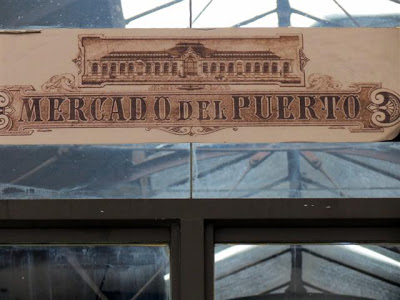
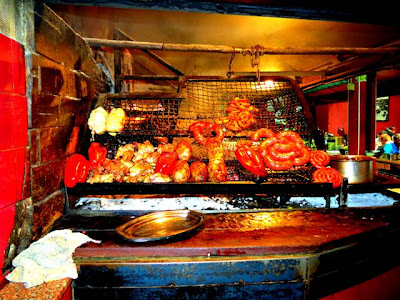


We drove towards the port and found the most beautiful market Mercado Del Puerto. Inside an ornate building that once was a train station, market stalls have been converted into Assado style steaks and seafood restaurants with exterior sidewalk seating as well.
Many of the establishments have proper tables, but many visitors prefer sitting on a stool facing the grill for an up-close view of the action. The aroma was just unbelievable as our stomachs announced that it is time to eat.
We drove towards the port and found the most beautiful market Mercado Del Puerto. Inside an ornate building that once was a train station, market stalls have been converted into Assado style steaks and seafood restaurants with exterior sidewalk seating as well.
Many of the establishments have proper tables, but many visitors prefer sitting on a stool facing the grill for an up-close view of the action. The aroma was just unbelievable as our stomachs announced that it is time to eat.
We entered one of the restaurants, Las Martas and ordered
some meat and potatoes. It was so yummy.
We walked around for some more looking at the stalls selling everything from conventional souvenirs, mate-drinking accessories and art. We then
entered a small street by the name: Calle La Cumparsita, or “Tango Street”.
Next, we were on our way to the tall hill outside the city. A 20 minutes ride brought us to Cerro de Montevideo (Montevideo's hill), where we found the Fort and the Militar Museum. There we enjoyed the wide panoramic views of Montevideo, the bay, the Port, Communications Tower and "hill church".
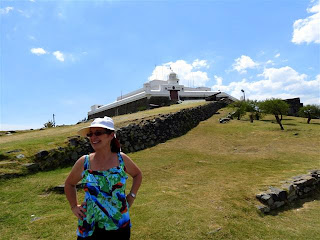

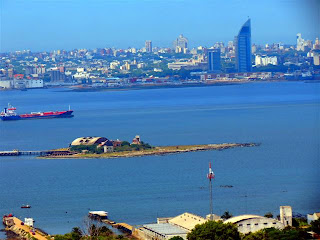
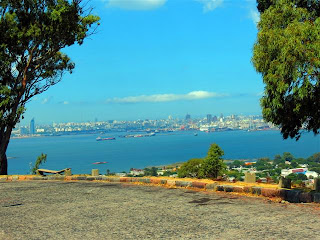


Next, we were on our way to the tall hill outside the city. A 20 minutes ride brought us to Cerro de Montevideo (Montevideo's hill), where we found the Fort and the Militar Museum. There we enjoyed the wide panoramic views of Montevideo, the bay, the Port, Communications Tower and "hill church".
We returned to downtown and found a parking spot in one of the small streets. The temperatures were up in the 90’s and the humidity was heavy.
We walked to Plaza Independecia, where we found the old government house and the main attraction: a 17 meter high equestrian statue of Jose Gervasio Artigas. Below ground, a 24-hour guard watches over Artigas’ remains.
Melanie explained that Artigas had been a soldier of the colonial guard, which watched over the western Uruguayan borders protecting from the odd Indian and Portuguese. In 1811, Artigas was commissioned in the patriot army and returned to lead the fight in the Banda Oriental, slowly moving on the royalist center here in Montevideo. Artigas became a very popular figure. After several twists and turns, Artigas captured Montevideo in 1814. He had always hoped for a confederation of equal provinces and became a leading voice for Federalism.
The always busy Plaza Independecia is the heart of Montevideo and contains a number of important buildings. We were told that the building in the
south-east corner, Palacio Salvo, was once the tallest in South
America and it still
dominates the square today.

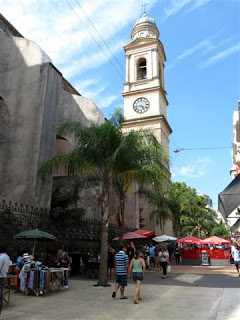


=================================================================================================================================================================================
We passed the plaza and entered through the historical Gate of the City and walked the promenade, which led us to the historic Plaza
Constitucion, also known as Plaza Matriz,
which is the oldest plaza in Montevideo. It is located in the first part of the city that was built: A beautiful cathedral is located as you walk into the plaza and the promenade was
full of shoppers and tourists.
We wanted to take the guided tour and watch the inside interior, but the lines were very long and the presence of the VIP from Ecuador, who had received his private viewing just made it impossible to wait.
=================================================================================================================================================================================
=================================================================================================================================================================================
David and Melanie drove us back to the port and after saying our goodbyes we returned to the ship.
We gave up on the night activities (very unusual for us, but we were exhausted!) and went straight to our cabin to catch on our sleep.
Day 13: February 15th, 2012
=================================================================================================================================================================================
After breakfast we disembarked the ship and walk along the tranquil beaches on the Rio de la Plata, towards Playa Brava,
enjoying the warm weather and admiring the beautiful buildings on the sea
front.
We walked to the busy street, not far from the beach and walked for about an hour enjoying the warm day and the nice atmosphere in the busy and modern street.
=================================================================================================================================================================================
We of course heard about the incident and also saw the movie but wanted to know more details and our guide/driver told us the story of the famous incident, also known as the Andes flight disaster:
The flight was a chartered flight carrying 45 people, including a rugby team, their friends, family and associates that crashed in the Andes on October 13, 1972. More than a quarter of the passengers died in the crash, and several others quickly succumbed to cold and injury. Of the 29 who were alive a few days after the accident, another eight were killed by an avalanche that swept over their shelter in the wreckage. The last 16 survivors were rescued on December 23, 1972, more
than two months after the crash. The survivors had little food and no source of heat in the harsh conditions at over 11,800 ft altitude.
Faced with starvation and radio news reports that the search for them had been abandoned, the survivors fed on the dead passengers who had been preserved in the snow.
Casa Pueblo is now a citadel-sculpture that includes a museum, an art gallery, and the Hotel Casapueblo, built around a tin box called La Pionera (The Pioneer), the artist designed it with a style that can be equated to the Mediterranean coast houses from Santorini, an island in the southern Aegean Sea, about 120 miles southeast from Greece's mainland.
We walked for about an hours between the homes admiring the style and beauty.
Next, we drove to our next destination: La Barra Bridge. It is actually looks like a rollercoaster bridge. As we approached it, the driver picked up some speed and as we were in the middle of it, we were up in the air for a second or two. Our hearts dropped and huge smiles were on our faces. What a feeling!
We drove
around town and even visited the area’s “Beverly Hills” where multi-millionaires build
their beautiful resorts.

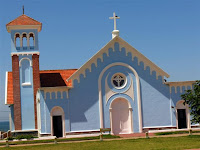 We headed back to Punta Del Este and arrived to the point where the Rio de la Plata meets the Atlantic Ocean and then drove a short mile to the Lighthouse, which is 135 feet tall. The
crystal panels which are part of its illumination system were brought from France. It works by electricity. Across the street we found the historical Nuestra Señora de la Candelaria, a beautiful
sky-blue-and-white Victorian structure, built in 1903.
We headed back to Punta Del Este and arrived to the point where the Rio de la Plata meets the Atlantic Ocean and then drove a short mile to the Lighthouse, which is 135 feet tall. The
crystal panels which are part of its illumination system were brought from France. It works by electricity. Across the street we found the historical Nuestra Señora de la Candelaria, a beautiful
sky-blue-and-white Victorian structure, built in 1903.
=================================================================================================================================================================================
=================================================================================================================================================================================
We drove to the Marina.
The harbor was full of yachts, but serves also as a fishing harbor. The fishermen were unloading their load of fish,
cutting off the filets and throwing overboard the rest, to the greatest joy of the sea-lions, some of which were huge. There were lots of seagulls as well, who had to be really quick if they wanted to catch the food before the sealions, taking the risk of accidentally ending up with their head in the mouth of the huge mammal.
cutting off the filets and throwing overboard the rest, to the greatest joy of the sea-lions, some of which were huge. There were lots of seagulls as well, who had to be really quick if they wanted to catch the food before the sealions, taking the risk of accidentally ending up with their head in the mouth of the huge mammal.
We drove back towards our ship and said our thanks to the wonderful guide/driver. In front of
the dock we looked at the classic and prestigious hotel and casino Conard Hilton, surrounded by spectacular nature of the Atlantic coast. This luxury hotel is the only Las Vegas-style casino and resort in the
region.
We embarked the ship around 4:00 and then napped until 7:00
=================================================================================================================================================================================
After dinner we tried the Internet but it was down. We sat around for a couple of hours talking and then went to sleep.
Day 14: February 16th, 2012
Today we were at sea.
After breakfast we did what we usually do at sea: eat, read, sleep and then (of course) eat again!!
As I was at the pool reading, an announcement by the captain had all of my attention: As it turns out, we will be an hour and a half late tomorrow when we will dock at Santos.
My heart dropped: We will miss our flight to Rio.
As I was at the pool reading, an announcement by the captain had all of my attention: As it turns out, we will be an hour and a half late tomorrow when we will dock at Santos.
My heart dropped: We will miss our flight to Rio.
After dinner we went to the theater and watched the Brazilian Production Starring Terra Brasil. The show was very entertaining.
We returned to our cabin and then packed our luggage and placed them outside the cabin so they will get picked up and stored for tomorrow’s checkout.
We then watched TV for about an hour and fell asleep.
Day 15: February 17th, 2012
The day started as normal as you can expect. We had an early breakfast, all dressed up,waiting to disembark and head to the airport in Sao Paulo.
The ship docked at around 9:30 but we received our passports only at 10:45. Our driver was waiting outside and we took
off at 11:00. I still had a glimpse of hope that we will make it on time to the airport. We had 54 kilometers (33 miles) to go through and most of them (45) we would drive through highways.
We arrived to the edge of the city at around 12:00, about 10 kilometers away from the airport. Things looked up. I smiled for the first time today. But that smile turned into a sour face when I
saw the traffice we had to fight thorough. The rest of the way took us exactly 55 minutes - an average of 3 miles per hour!!
Our driver told us that every Friday the traffic here is heavy but today it was horrible as it was the beginning of the formal festivities all around Brazil. As soon as we arrived I jumped from the car and ran towards TAM
Airlines offices. A lady was sorting out the people standing in line and once she understood that our flight is leaving
in 5 minutes, she had let us go in front of the line to talk a representative. The gentleman had bad
news: “The flight is closed”. He then looked at his monitor and told us that the next flight will leave at 9:40 PM.
He did not finish there: “The only seats available are in first class and if you would like me to book you, the price is additional $650 per passenger”. I thought I was in a dream, a bad one. I left his office and ran towards the van. I explained to our driver
what had just happened. He had a suggestion: “Get to the bus terminal and get the next bus to Rio. The price should be around $70 per passenger and the taxi ride another $50”. He made sense and I thought that moment that this must be the only solution and that I should take his advice.
We took our luggage and climbed a taxi as our driver had another pickup. The time was 1:30. Traffic was even heavier than just a short time ago. We fought through bad traffic again and made it to the bus terminal at 3:00!!
We found the gate to the Rio’s bus and stood in line. The sign above said: "Next bus at 5:30”. When I finally made it to the counter, I asked for 2 tickets for the 5:30 bus. The woman at the counter looked at me and said: “You understand that 5:30 means 5:30 in the morning! Right?” I felt that my blood is dropping from my face to my feet. I thanked her and looked for Tova who was watching the luggage like a German shepherd.
We were clueless of what to do next. As we were standing there and talking, a young guy approached us. He had a luggage with him. He started to talk to us in Portuguese and we told him “English No Portuguese”! He then asked us (in broken
English) if we knew where he could pick up a taxi for the airport. I showed him the entrance where we came from
and he right away said: “This is a dangerous place. Do not go there. There are a lot of crooks there just waiting for tourists like us. I understand you want to go to the airport, I know a safe place where we could all pick up a taxi there”.
My all body went into an alert mode. We have so many years of experience in traveling and this was for sure a setup. As I turned around I saw a BIG (I mean HUGE) guy standing there watching us. I figured out the scheme: The setup guy will draw our attention and the second guy would leave with some (or all) of our luggage. Or even worse: The setup guy will lure us to a side street where we will become victims.
I looked at the setup guy and yelled at him to leave us alone. I then told Tova (in Hebrew): “they are both trying to harm us… let’s get out of here”.
I looked at the setup guy and yelled at him to leave us alone. I then told Tova (in Hebrew): “they are both trying to harm us… let’s get out of here”.
We took the luggage and headed to the Internet Café, knowing that over there we will feel safer, as we saw a guard at the door of the café’.
I had the business card of our tour guide in Sao Paulo: Monika.
I used the telephone inside the Internet Café and called her. She was shocked to hear that we are in Sao
Paulo Bus Terminal and asked us to leave the place right away and take a taxi back to the airport. Over there, she said,
you should try renting a car. It should cost about $150 for the day.
Once again we climbed another taxi and we were on our wayback to the airport. The time was 4:00 when we left. We arrived at 6:00 pm as traffic was unbelievable.
Once again we climbed another taxi and we were on our wayback to the airport. The time was 4:00 when we left. We arrived at 6:00 pm as traffic was unbelievable.
While Tova was watching the luggage I went downstairs to the Rent-A-Car kiosks. I stood in a short line at Avis. I told the lady in the window that I would like to rent a car tonight. The representative asked me: “I will be happy to help you. Did you make reservations with us?” When I said that I do not have any reservations, she then told me that there are no cars available as it is a Holiday.
I ran upstairs to Tova and we decided that we probably exhausted all of our options and that the only way to get out of here and continue our trip was to pay the $1300 and board the next flight to Rio.
When we arrived to TAM Airlines offices I went straight to the rep who had talked to me about 5 hours
ago, ignoring the long line ahead of me.
The rep remembered me but had some more bad news: “Those tickets are gone. The next flight available is at 5:00 am the next morning, and once again “Only first class”. I told him that it is impossible and that he should try to put us in a standby list for the 9:45 pm flight. He told me that he will do so only AFTER I pay him first. I did.
We headed downstairs to check in the luggage and also put ourselves in the standby list and we could do so downstairs in a different counter. We found the counter but they were closed until 6:00 pm. There were already about 15 people in the queue.
As soon as they opened I told the guy in front of me (a tourist from Poland, who was extremely nice and even let use his phone to call Rodrigo) that I will be right back. I approached the first teller I saw and asked her where is the line for standby passengers. She answered that there is no line for that and she will glad to help me. Her name was Anna-Maria. She wrote us down on the list, in positions 1 and 2.
Heavy rain started to pour down while she was assisting me. She smiled and told me: “Mr. Oren, you are lucky. Heavy rain means much heavier traffic. It will take someone to get here from town in approximately 3 hours. Come back at 9:15 and I am sure I will find you two seats”.
We found a restaurant in the airport and had a decent dinner. We then found a quiet place, not far from the TAM counter and used our laptop to surf the Internet for awhile.
Around 8:45 I went back to the counter to check what is going on. I was shocked: about 150 people were now in the queue.
I found Anna-Maria and as soon as she saw us she said: “Oh, here you are. I must check you in right now otherwise you will not get on the flight”.
I found Anna-Maria and as soon as she saw us she said: “Oh, here you are. I must check you in right now otherwise you will not get on the flight”.
I ran (ala O.J Simpson’s commercial) and when Tova saw me from afar she understood that we must be on the move NOW! Together we rushed towards the counter. Anna-Maria was wonderful. As all the counters were busy with people, She opened another counter and treated us like VIP. Five minutes later we had our first class tickets in our hands and the luggage were checked in.
We found the gate. The time was now around 9:15. The flight was delayed so other passengers could make it as they were delayed because of the rain. I realized that if it was not for Anna-Maria’s help, we would probably not leave the airport until 5:00 AM (maybe).
We left the airport at around 11:00 and arrived to Rio just before midnight. This was probably the fastest way that I had spent $1800 ($1300 plus the original $500 for the original
tickets, which I had paid months ago).
Our hotel was not far from the terminal. When we checked in, a note was awaiting us. It was from Rodrigo and it said:“See you tomorrow amigos. I will be there at 7:30”.
We hardly had any sleep that night. The excitement and adventure that we had experienced occupied our minds.
Day 16: February 18th, 2012
=================================================================================================================================================================================
=================================================================================================================================================================================
The Carnival in Rio de Janeiro is a world famous festival held before Lent every year and considered the biggest carnival in the world with more than two million people per day on the streets. The first festivals of Rio date back to 1723. The festivals are very common during carnival time. Traditions had changed and elegance and extravagance are usually left behind, but music and dancing are on. Anyone is allowed to participate in the street festivals. It takes nothing to join in on the fun except to jump in. Incorporated into every aspect of the Rio carnival are dancing and music. The most famous dance is of course the samba, the Brazilian dance that is so energetic.
We spent four hours dancing along with the crowd, taking pictures of some crazy costumes and had the time of our lives.



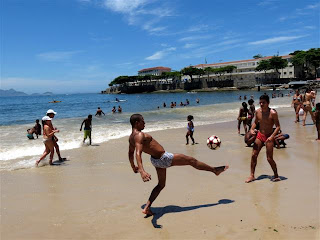
We now headed towards Ipanema Beach where we joined yet another block party, surrounded by tens of thousands of people who were all dressed in different costumes, many of them already drunk, and we joined them in dancing the Samba in the streets.
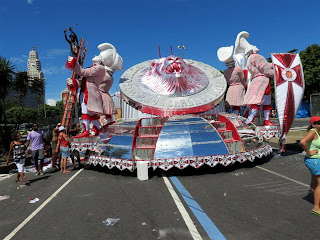











floats, all decorated. On the ground, inside boxes, there were the costumes to be put on by the participants later on tonight. The floats were magnificent in size and richness, decorated with many colors and accessories.
=================================================================================================================================================================================
We stopped at a supermarket and bought bread, meat, chips and water bottles. We planned on making some sandwiched to be used tonight. We then headed to our hotel to shower, change cloths and rest.
A long night was still in our agenda.
A long night was still in our agenda.
Rodrigo returned to the hotel at 7:00. We asked him to take us to a local bakery where we could have some coffee and cake.
He knew just the place for us. After so many days he understood that we are not looking for glamorous places but instead simple places where the locals go and where the food is plenty and tasty.
The bakery was inside a “blue color” neighborhood.
The selection was wide: many bake goods from simple cakes, pies, and even home-made pizza. We bought some coffee cakes, to go along with the delicious coffee and some other cookies for tonight’s performance.
=================================================================================================================================================================================
We were seated in Section 9. Right there in the middle of the huge stadium. We got acquainted to the other people sitting with us. One of them was an expert on the copetition and spoke fluent English.
At 9:30 a display of fireworks announced the beginning of the competition and the first school came dancing in. Hundreds of participants,
all dressed in different costumes were dancing away as beautiful music came
from the loud speakers.

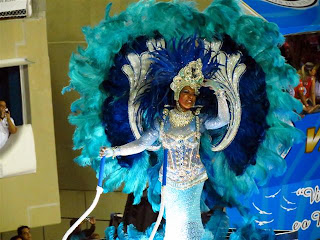
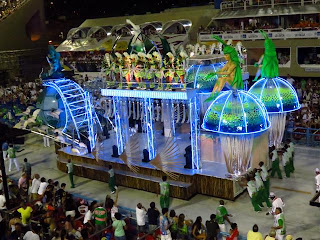





When we asked the lady next to us (the one who spoke fluent English) what are the rules for the competition she told us that there is a special order that every school has to follow with their parade entries. Each school begins with the first wing. The wing is made up of ten to fifteen people only, and they are the ones who introduce the school and set the mood. These people have choreographic dances in fancy costumes that usually tell a short story or a theme. Following that wing (also called "comissão de frente"), is the first float of the samba school, called "abre-alas".



When we asked the lady next to us (the one who spoke fluent English) what are the rules for the competition she told us that there is a special order that every school has to follow with their parade entries. Each school begins with the first wing. The wing is made up of ten to fifteen people only, and they are the ones who introduce the school and set the mood. These people have choreographic dances in fancy costumes that usually tell a short story or a theme. Following that wing (also called "comissão de frente"), is the first float of the samba school, called "abre-alas".
Some of the important roles include the “porta-bandeira” and “mestre-sala”. The “porta-bandeira” is a very important lady who is in charge of the samba school flag, including making sure to not allow the flag to roll. She is accompanied by the “mestre-sala”, who is supposed to draw everyone’s attention to "his queen", the “porta-bandeira”, who are also important, are the people who populate the floats, also known as “destaques”, They have the most luxurious and expensive costumes that can be extremely heavy. Along with all the floats is one main item that is located at the top of each float.
The participants dance and sing for the entire time that the float is on the runway. (55 minutes). One other aspect that is mandatory is the presence of the “ala das baianas”. This is a wing of the samba school entry that includes at least 100 females only. These women along with many other people do not ride on the floats as many others do; instead they are “passistas”, the people who belong to the samba school that do the marching alongside and between the floats.
With all the above information we started to understand what is going on and enjoyed the competition like the rest of the crowd, who were cheering for the entire night, singing along and even getting up and dance along with the participants.

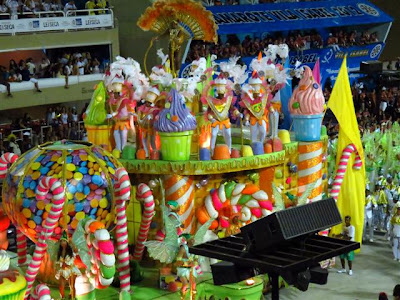

I can’t find the right words to describe the enjoyment and the total experience. It was something that you wished will never end. My body was filled with energy and my smile never moved off my face. I felt as if I was in a different world, filled with happiness and excitement.
After a 30 minutes mandatory break, the second school showed up to the cheers of the crowd. They too appeared for about 55 minutes and than another break and another school was on the horizons.



We stayed until 3:00 am and then met with Rodrigo outside, who took us back to our hotel.
What a day!!!
Day 17: February 19th, 2012
We had breakfast and met with Rodrigo, who took us to Hotel Astoria where we met our new guide for the Favela Tour. We rode a Hammer and arrived
to a top of a beautiful mountain. The panoramic view was unbelievable.


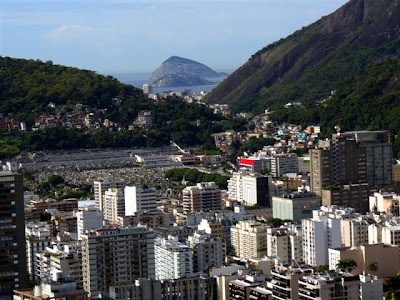
=================================================================================================================================================================================
He described to the group the following: A Favela means Slum. We were in Botafogo in the South Zone Rio de Janeiro. The slum has about 8,000 residents, with 500 wooden houses, 2,000 brick houses, 4 kindergartens, 3 bakeries, 2 sports fields, 1 block of a samba school, 3 military units and 1 small market. The slum is one of the steepest city slums.
=================================================================================================================================================================================
Recently, the slum has been undergoing a process of urbanization. Several houses were built, sanitation and sewage, water piping and installation of electrical cables. Most work done in recent years in Dona Marta was the construction of a cable car that facilitates the transport of residents to higher areas of the hill.
Another major change in Dona Marta was the occupation of military force. Since 2008 the slum has no more drugs trafficking.
One of the highlights was stopping at the “Michael Jackson Deck”. Caesar told us that the Favela has been visited by celebrities like Madonna, Alicia Keys, Beyonce and Michael Jackson and at this deck Michael Jackson’s video clip "They Don’t Care about Us" was shot.
After the short description we left the group and our guide took us inside the slum. We walked the narrow steep streets, met with the locals, and were accompanied by many kidswho had followed us everywhere we went. They of course asked for money and I instead I gave them all pencils, I had brought with me just for thiat purpose.
After the short description we left the group and our guide took us inside the slum. We walked the narrow steep streets, met with the locals, and were accompanied by many kidswho had followed us everywhere we went. They of course asked for money and I instead I gave them all pencils, I had brought with me just for thiat purpose.
At one point we entered a home and the lady, who lived her by herself in a one bedroom home, invited us to have some of her home-made delicious empanadas. We then stopped at the only grocery shop in the Favela and bought cold drinks.
After the 2 hours tour, the Hammer took us back to the Hotel Astoria where Rodrigo was waiting for us.



The rest of the afternoon was “Free Time”. Rodrigo told us that we can use him and the van to go wherever we wanted. I asked him for his recommendation and he suggested driving to Niterói, a city nearby Rio. We of course agreed!
The city has the nicknames of Niquiti, Nicki City and the Smile City, Rodrigo told us and that its population of half a million, makes this city the 6th largest in Brazil and is classified to be the richest city of this country.
We crossed the Niterói Bridge, which is commonly known as the Rio-Niterói Bridge. It is a box girder bridge located at Guanabara Bay. It is currently the longest prestressed concrete bridge in the southern hemisphere and the sixth longest in the world (8.25 miles). The views from the bridge were amazing. At one point we saw Vision of The Seas at the bay and we smiled when many beautiful
memories flooded our minds. Rodrigo
mentioned that before the bridge was completed (1985), people from the two neighboring cities used to drive 62 miles in order to get to the other city.
We used the main street and arrived at the bay. Two men were standing on top of a rock in the middle of the bay. When they saw that I
carry a camera, they communicated with us by whistling and started to jump in
turns into the deep water, as my camera was catching many of their moves.
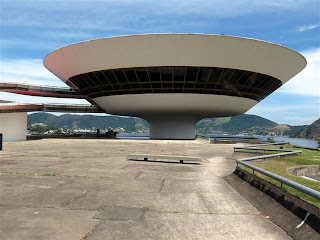

We drove a short distance and arrived to The Niterói Contemporary Art Museum. We learned that this magnificent building was yet another creation designed by Oscar Niemeyer (1996). Unfortunately the museum was closed.
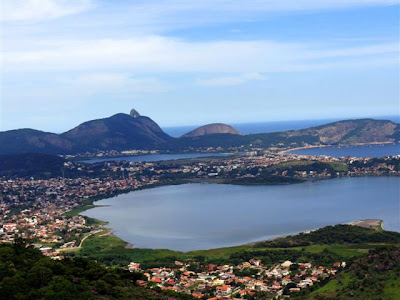


=================================================================================================================================================================================
The highlight of our tour was next: Parque Da Cidade located on the hill of Light Wind at an altitude of 270 meters, covering an area of approximately 150,00 square meters. What we witnessed was quite overwhelming as spectacular views of the bay, the bridge and the city of Rio in the horizons, were astonishing.
After an hour of “wow’s” and “Did you see that?” we reluctantly left the park and headed downhill towards the city where we found a quiet place and sipped delicious cappuccino’s accompanied with assorted cookies.
=================================================================================================================================================================================
We headed back to Copacabana
Beach and found a nice restaurant where you pay by the weight of your plate (Pay by the Kilo). This is how it works: After being seated we went to a buffet-style salad bar, and at the end of the buffet there was the Bar-B-Q stand where you ask the cook to pile different meats into your plate. Once we were satisfied with our selection, we stood in front of the cashier, who put our plate on a scale and then a total price was figured, calculated by the weight of the plate. We paid and went back to our table. The place was full of people, most of them locals and the food was simply delicious!
With our tummy full we joined the block night party on the
promenade where thousands of half drunken people were dancing around several
bands. Once again I felt as part of the locals and this was thanks to how they had treated everyone.









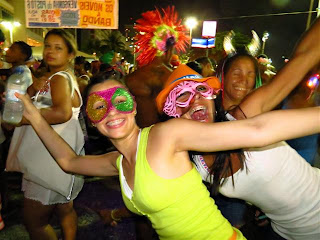

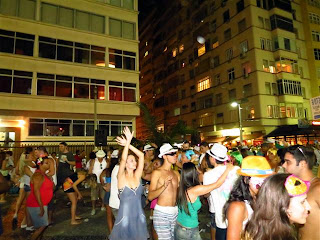
Once again we joined a block party at the beach. Most of the people were already drunk at this time of the evening, which added to the beautiful atmosphere. People were hugging, kissing and dancing along. Tova & Rodrigo stood in the corner and I joined the crowd.
Once again we joined a block party at the beach. Most of the people were already drunk at this time of the evening, which added to the beautiful atmosphere. People were hugging, kissing and dancing along. Tova & Rodrigo stood in the corner and I joined the crowd.
At around 10:00 it was time to head back to our hotel.
Our flight was scheduled to leave at 2:00 AM and after our experience in Sao Paulo we did not want to take any chances.
Our flight was scheduled to leave at 2:00 AM and after our experience in Sao Paulo we did not want to take any chances.
We arrived to the hotel, picked up our luggage from the storage
and headed to the Copa Airlines queue.
We boarded the plane and left Rio
with a promise that we will return!!!
